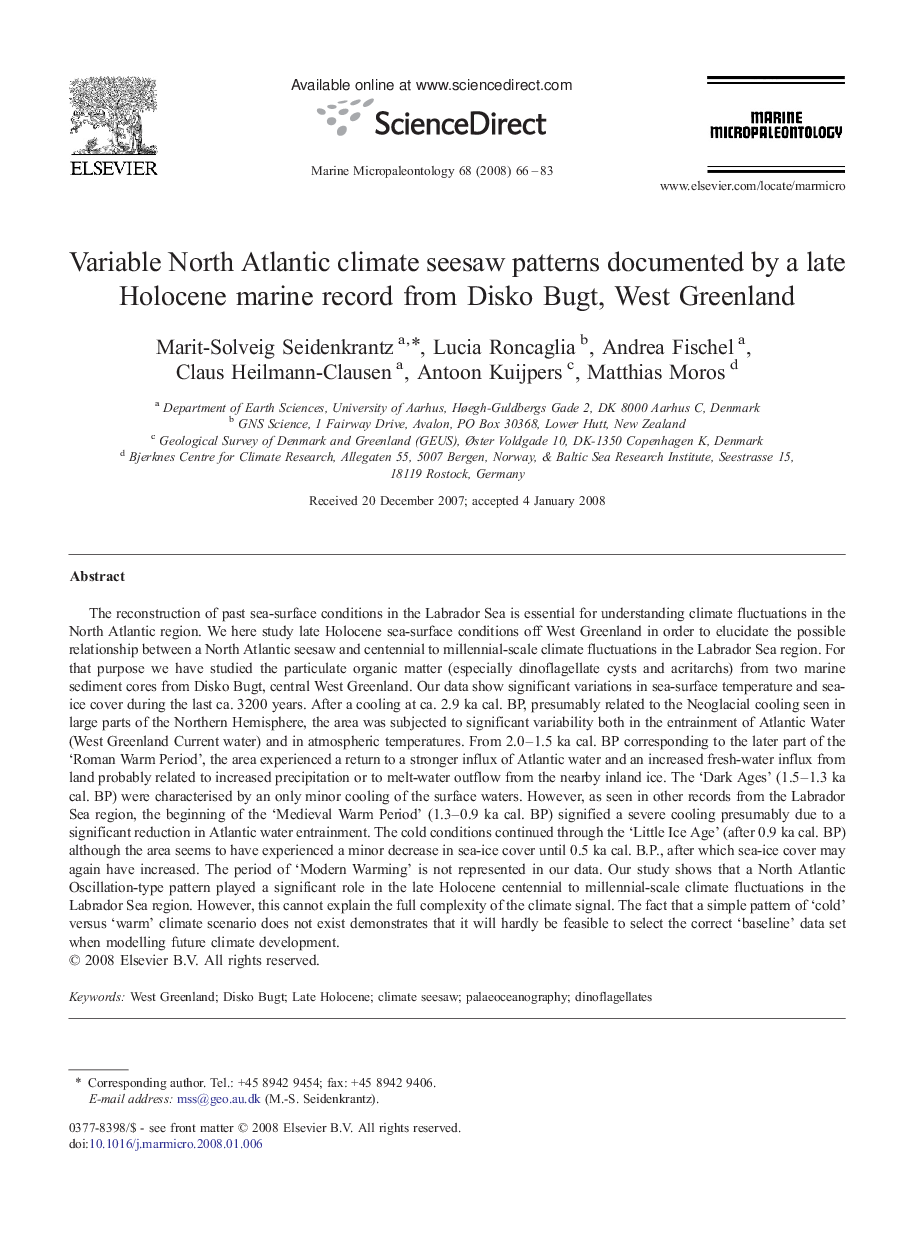| کد مقاله | کد نشریه | سال انتشار | مقاله انگلیسی | نسخه تمام متن |
|---|---|---|---|---|
| 4749383 | 1642221 | 2008 | 18 صفحه PDF | دانلود رایگان |

The reconstruction of past sea-surface conditions in the Labrador Sea is essential for understanding climate fluctuations in the North Atlantic region. We here study late Holocene sea-surface conditions off West Greenland in order to elucidate the possible relationship between a North Atlantic seesaw and centennial to millennial-scale climate fluctuations in the Labrador Sea region. For that purpose we have studied the particulate organic matter (especially dinoflagellate cysts and acritarchs) from two marine sediment cores from Disko Bugt, central West Greenland. Our data show significant variations in sea-surface temperature and sea-ice cover during the last ca. 3200 years. After a cooling at ca. 2.9 ka cal. BP, presumably related to the Neoglacial cooling seen in large parts of the Northern Hemisphere, the area was subjected to significant variability both in the entrainment of Atlantic Water (West Greenland Current water) and in atmospheric temperatures. From 2.0–1.5 ka cal. BP corresponding to the later part of the ‘Roman Warm Period’, the area experienced a return to a stronger influx of Atlantic water and an increased fresh-water influx from land probably related to increased precipitation or to melt-water outflow from the nearby inland ice. The ‘Dark Ages’ (1.5–1.3 ka cal. BP) were characterised by an only minor cooling of the surface waters. However, as seen in other records from the Labrador Sea region, the beginning of the ‘Medieval Warm Period’ (1.3–0.9 ka cal. BP) signified a severe cooling presumably due to a significant reduction in Atlantic water entrainment. The cold conditions continued through the ‘Little Ice Age’ (after 0.9 ka cal. BP) although the area seems to have experienced a minor decrease in sea-ice cover until 0.5 ka cal. B.P., after which sea-ice cover may again have increased. The period of ‘Modern Warming’ is not represented in our data. Our study shows that a North Atlantic Oscillation-type pattern played a significant role in the late Holocene centennial to millennial-scale climate fluctuations in the Labrador Sea region. However, this cannot explain the full complexity of the climate signal. The fact that a simple pattern of ‘cold’ versus ‘warm’ climate scenario does not exist demonstrates that it will hardly be feasible to select the correct ‘baseline’ data set when modelling future climate development.
Journal: Marine Micropaleontology - Volume 68, Issues 1–2, July 2008, Pages 66–83